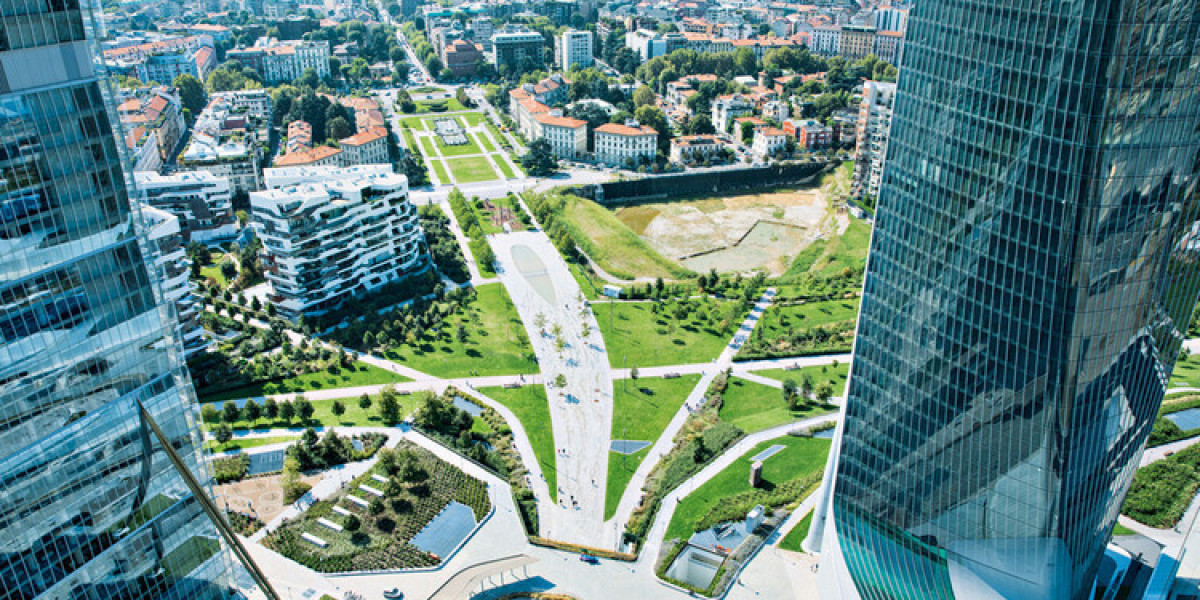Cities have always been the heartbeat of human civilization. From the winding streets of ancient Athens to the high-rise skylines of New York, urban environments reflect who we are, how we live, and where we’re heading. In recent decades, the conversation around urban development has shifted significantly. It’s no longer just about aesthetics or maximizing space; the focus has turned toward sustainability, functionality, and long-term impact. Architecture lies at the core of this transition, playing a pivotal role in shaping the physical and social fabric of urban areas.
Why Cities Are Changing & the Role of Architecture
According to a 2022 report by the United Nations, more than 68% of the global population is projected to live in urban areas by 2050. This statistic alone brings immense pressure to build cities that are resilient, inclusive, and environmentally responsible. The architectural response to this challenge isn’t just about designing buildings—it’s about designing systems, networks, and communities.
Modern architecture is no longer a standalone discipline. It now intersects with environmental science, sociology, urban planning, and technology. Architects are expected to think like systems designers, problem-solvers, and sustainability advocates. Their work not only shapes skylines but also addresses broader concerns like climate change, housing inequality, energy efficiency, and mental well-being.
Historical Perspective: From Monumental to Modular
If we look back, architecture has always mirrored societal priorities. Ancient Egyptian structures were built to glorify the gods and kings, while Roman architecture focused on infrastructure, roads, and public spaces. Fast forward to the 20th century, and the post-war boom triggered a wave of modernist architecture that emphasized functionality, minimalism, and industrial materials.
However, those modernist ideals—though revolutionary—often neglected the human and environmental dimensions of design. The large-scale housing estates of the 1960s and 70s, for example, have been widely criticized for creating alienating environments that lacked community focus.
Today’s urban challenges demand a different mindset. The shift is toward regenerative design—architecture that doesn’t just minimize harm, but actively contributes to the environment and society.
Key Principles of Contemporary Urban Architecture
Sustainability as a Baseline, Not a Bonus
Sustainable design now underpins every responsible architectural project. Architects must consider the life cycle of materials, energy usage, and carbon emissions from construction through to occupancy. Techniques such as passive solar design, green roofs, and natural ventilation are being implemented to reduce dependence on mechanical systems.Adaptive Reuse and Retrofitting
Instead of demolishing old structures, many cities are embracing adaptive reuse. This approach extends the life of buildings while preserving their cultural heritage. Retrofitting older buildings with energy-efficient systems offers a cost-effective and less wasteful alternative to new construction.Designing for Density
With growing populations and limited urban land, high-density living is unavoidable. But density doesn’t have to mean cramped or impersonal. Thoughtfully designed mixed-use developments can foster vibrant, walkable neighborhoods with shared public spaces and accessible services.Resilience to Climate Change
Architecture must now account for a variety of climate risks—rising sea levels, extreme temperatures, flooding, and more. Resilient design strategies include elevated structures, floodable parks, and buildings that can adapt to changing weather patterns or emergency needs.Social Inclusion and Equity
Architecture also plays a social role. Affordable housing, universal design, and access to green spaces are fundamental to urban well-being. Projects that engage local communities in the design process are more likely to meet real needs and build social cohesion.
The Rise of Smart Cities & Digital Integration
Technology is transforming how architects approach urban design. Building Information Modelling (BIM), Geographic Information Systems (GIS), and parametric design tools allow for more accurate planning and visualization of complex projects. These tools enable designers to simulate environmental conditions, test structural performance, and even anticipate user behavior before construction begins.
Smart cities are pushing this integration further, incorporating IoT (Internet of Things) technology into infrastructure. From intelligent traffic systems to responsive lighting and climate controls, cities are becoming more connected and data-driven. Architects are collaborating with technologists and city planners to design structures that can communicate with their surroundings, adapt in real time, and enhance efficiency.
Urban Nature: Biophilic & Ecological Design
There’s increasing evidence that our built environment impacts our mental and physical health. Research by the University of Exeter found that people living near green spaces reported significantly higher levels of well-being. Biophilic design—a concept that integrates natural elements into architectural spaces—is gaining traction.
This approach includes the use of natural materials, daylighting, vegetation, and water features to bring people closer to nature. Beyond aesthetics, urban greenery improves air quality, supports biodiversity, and mitigates the urban heat island effect. It’s also being used strategically to manage stormwater and reduce the risk of flooding.
Case Studies: How Cities Are Reimagining Urban Living
Singapore’s Green Agenda
Often cited as a model for sustainable urban development, Singapore has embedded nature into its cityscape. Projects like the “Gardens by the Bay” and numerous vertical gardens across residential towers exemplify how architecture and nature can coexist harmoniously.The 15-Minute City Concept in Paris
Paris is actively working toward creating “15-minute cities”—neighborhoods where residents can access work, shops, education, and leisure within a 15-minute walk or bike ride. This model emphasizes decentralization, mixed-use zoning, and human-scale design.The High Line in New York
This linear park built on a historic freight rail line illustrates the power of adaptive reuse and community-driven design. What was once industrial infrastructure is now a cherished public space that has revitalized surrounding neighborhoods and inspired similar projects worldwide.
Challenges & Future Directions
Despite these advancements, architecture in urban settings still faces considerable challenges:
Policy and Regulation: Building codes and zoning laws often lag behind innovation. Streamlining these processes is essential for fostering sustainable development.
Affordability vs. Innovation: Cutting-edge design can be expensive. Balancing innovation with affordability remains a major hurdle, especially in regions facing housing crises.
Cultural Relevance: Global trends in architecture can sometimes erase local identities. Respecting cultural heritage and local materials is critical in making cities feel authentic and inclusive.
Looking ahead, the role of architects will continue to evolve. They’ll be part designer, part analyst, and part advocate—collaborating across disciplines to design for both people and the planet.
Final Thoughts
Urban architecture is at a pivotal moment. The choices made today will influence how billions of people live tomorrow. From climate change to social equity, the built environment holds solutions that are as complex as they are hopeful. In the broader ecosystem of development, Architectural Design & Planning Services remain a cornerstone—connecting vision to reality, and ideas to impact.
As cities continue to grow, the responsibility of shaping them sustainably doesn’t rest on architects alone. Policymakers, developers, communities, and individuals all have a role to play. But with research-based, forward-thinking design at the foundation, the path to better cities becomes not only possible—but inevitable.







